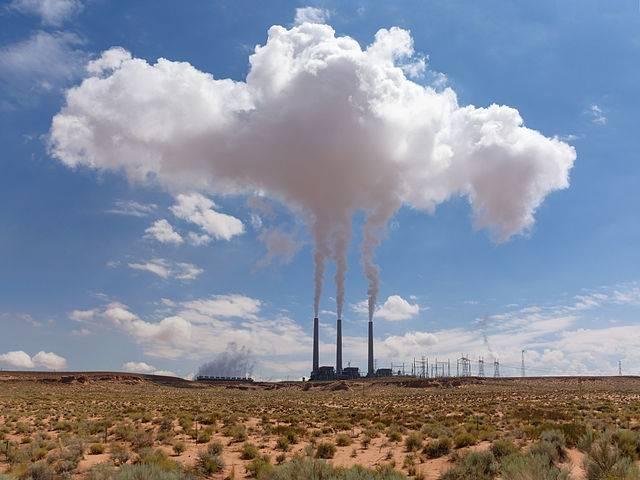
The potential closure of the largest coal plant in the American West is another sign that dirty coal is on its way out of our energy mix -- and there's nothing that Donald Trump can to do save this industry.
As Grist reported last weekend, the Navajo Generating Station in Arizona has come to the conclusion that it might have to close due to the financial challenges of generating electricity from coal. In this case, at least, the reasons are purely economic.
“Nobody in this country is building new coal plants because they’re too expensive,” Jeremy Richardson, an energy analyst at the Union of Concerned Scientists, told Grist. “As you look into the future, it’s cheaper to either shift to an existing natural gas plant where the capacity is available or even, in some cases, switch to renewable energy.”
While Bobby Magill of Grist focuses on cheap natural gas as the main reason coal can't compete, other analyses show that clean energy and efficiency played as much of, if not a larger, role in the move away from coal.
This plant's closure can't come fast enough for those living near its massive footprint. In fact, local activists have been fighting for the plant's closure for years.
The plant is located right alongside America's largest Native American Reservation, the Navajo Nation. And it is the Navajo who feel the greatest brunt of the health and environmental impacts from this massive plant.
In a case of blatant environment injustice, the plant actually operates with an exception from pollution controls, leaving locals highly vulnerable.
“Smokestack pollution from [the Navajo Generating Station] sickens our skies and land and children and elders just as coal smokestack pollution does anywhere, so why is the Navajo community afforded less protection?” Nicole Horseherder, a resident of nearby Black Mesa and a founding member of the community organization To’ Nizhoni Ani, asked rhetorically in a press statement this past November.
If the owners decide to close the plant, it will come as a breath of relief for Navajo Nation, and another sign that coal is an energy of the past. Clean energy is getting cheaper by the month, and new technologies such as battery storage and better, more efficient solar photovoltaics are making coal obsolete.
Moreover, a possible closure of the Navajo Generating Station shows just how weak of a state the coal industry is in. When a large power plant with waivers from pollution controls can't compete with natural gas and clean energy, it's a sign that no matter what Trump and his climate-denying cronies cook up in D.C., it won't make a difference. Coal is dying.
Image credit: Myra Bella via Wikimedia Commons

Nithin Coca is a freelance journalist who focuses on environmental, social, and economic issues around the world, with specific expertise in Southeast Asia.














